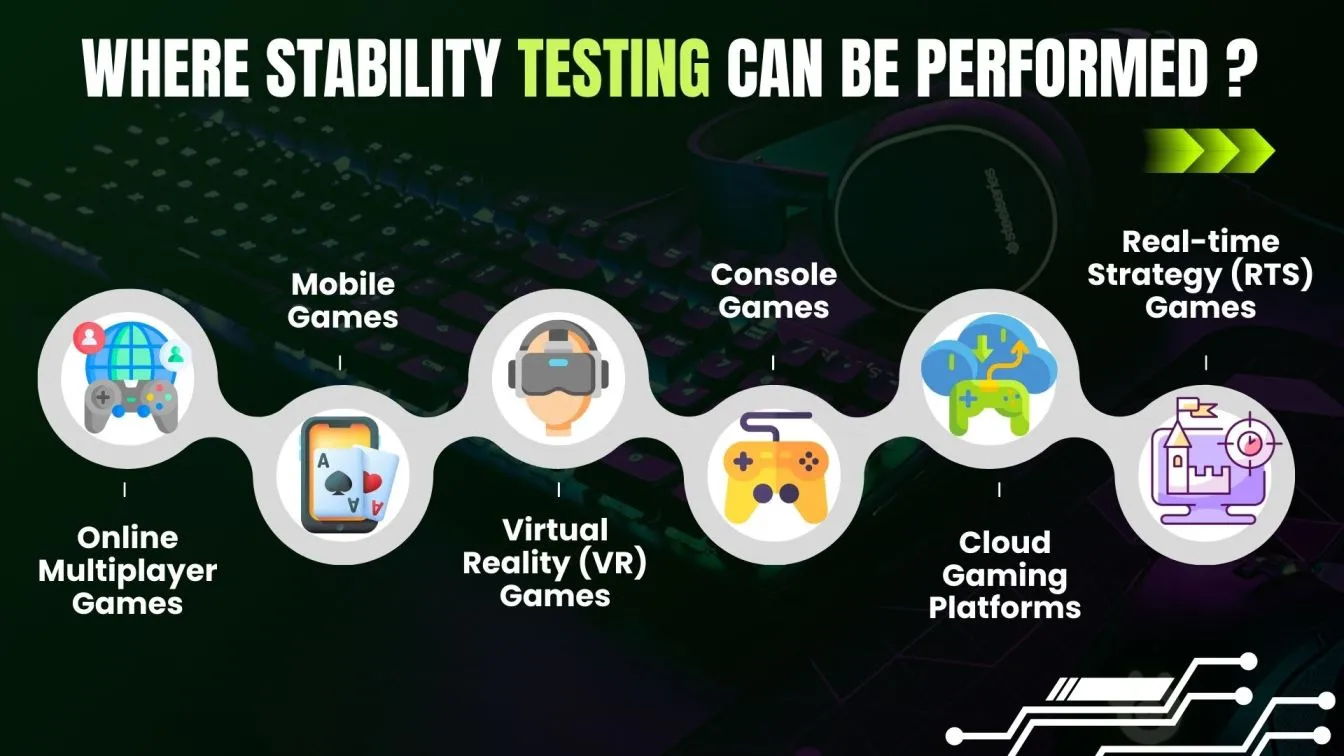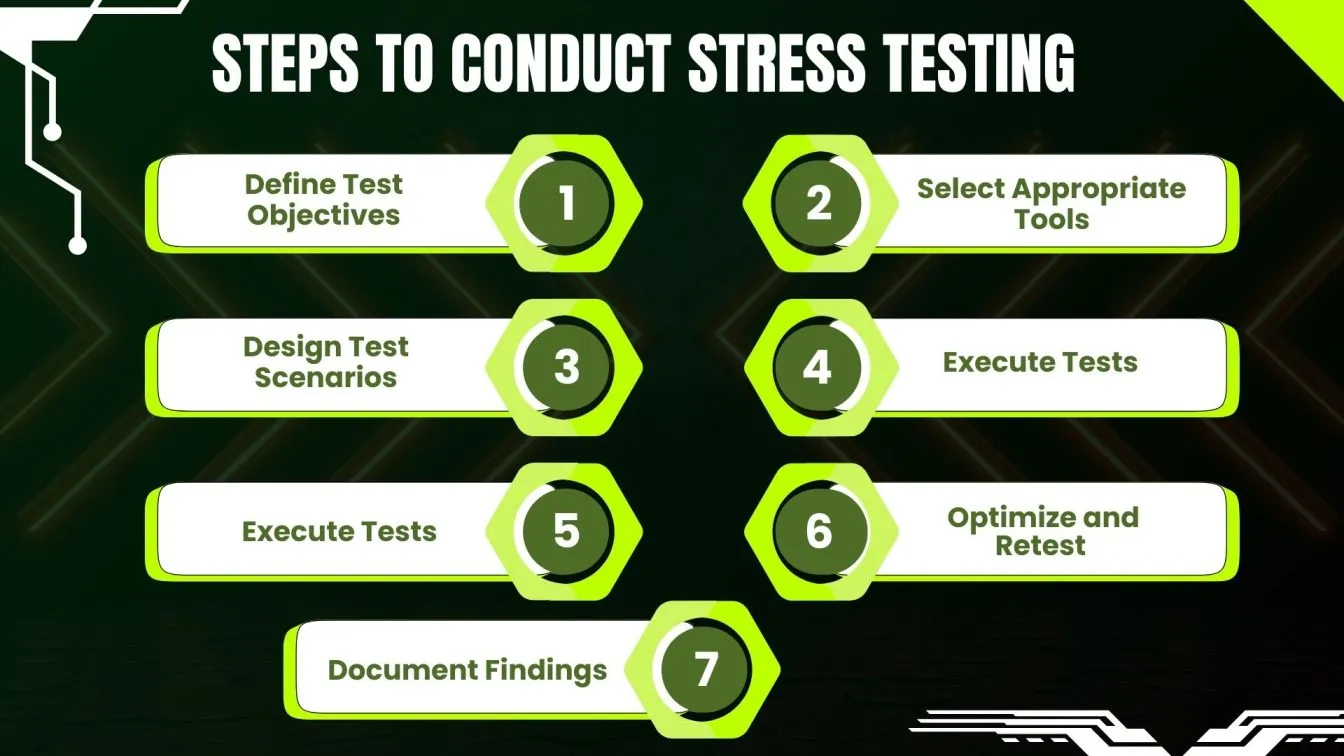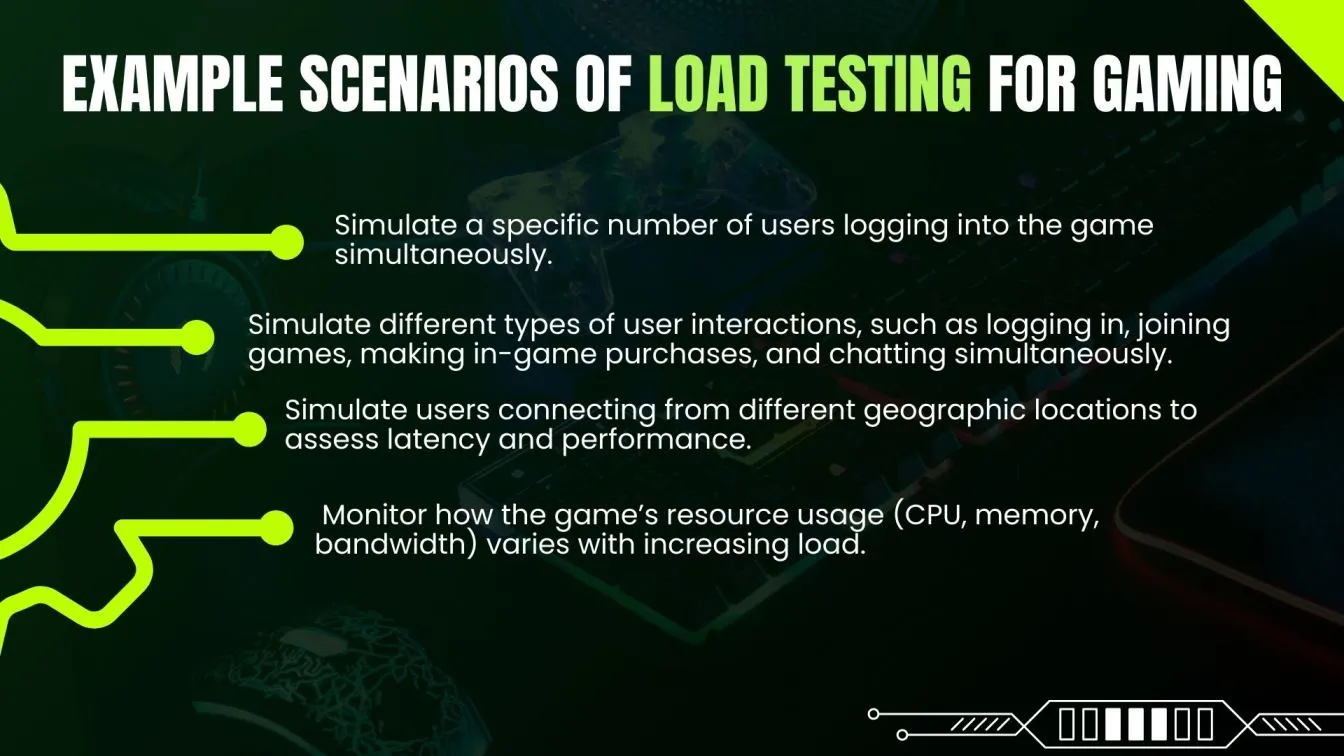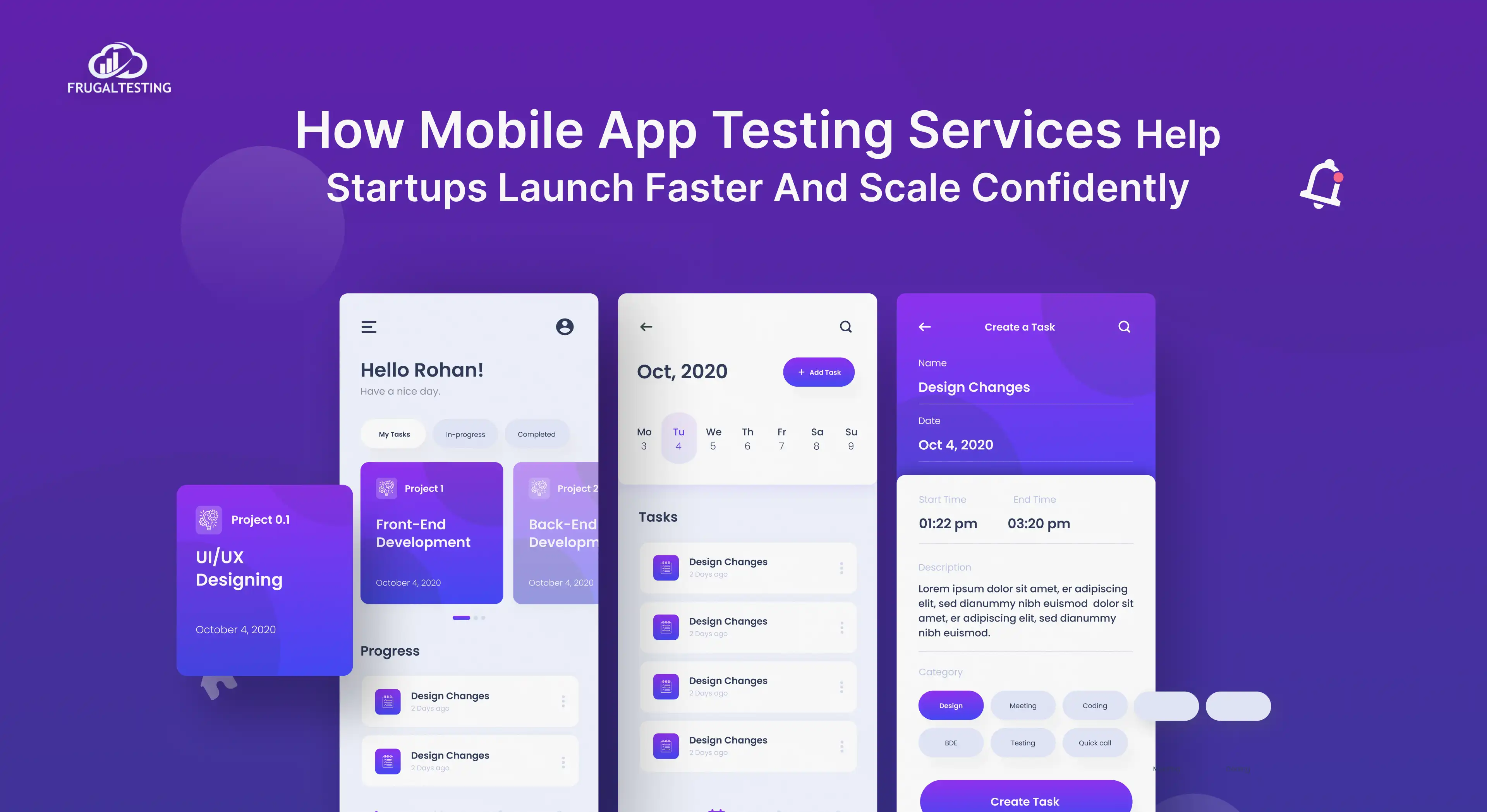In the Gaming Industry, ensuring a flawless player experience is crucial for a game's success. Game QA testing plays a vital role in identifying bugs, optimizing performance, and ensuring compatibility across various platforms. Without thorough QA testing, even the most visually appealing and innovative games can face backlash due to frustrating glitches, crashes, or inconsistent performance.
This blog will explore key game QA testing methodologies, shedding light on the importance of functional, compatibility, and performance testing. We will also discuss the role of automation in speeding up QA processes, as well as the growing importance of AI/ML technologies in enhancing game QA strategies.
.webp)
Key Points We'll Cover in This Blog:
📌 How QA testing impacts gameplay and player satisfaction.
📌 Discuss functional testing, game compatibility testing, and performance testing to ensure core game mechanics and optimal performance.
📌 The role of regression testing, automation, and AI/ML in enhancing testing accuracy and efficiency.
📌 Why automation is critical for faster testing iterations and improving testing scope.
📌 Techniques for stress testing, load testing, and latency testing to ensure stability, even under high user loads.
Importance of Game QA Testing in Player Experience
Game QA testing plays a crucial role in ensuring an exceptional player experience by identifying and addressing issues before a game's release. It helps in detecting bugs, glitches, and performance problems that could disrupt gameplay, leading to frustration and dissatisfaction among players. By thoroughly testing core game mechanics, user interfaces, and features, QA teams ensure the game is not only functional but also enjoyable, smooth, and immersive.
.webp)
Moreover, QA testing extends beyond just bug fixes; it ensures the game performs well across various devices, platforms, and network conditions. This includes testing for compatibility, performance, and stability, ensuring that the game delivers consistent quality regardless of where or how it is played.
Understanding the Role of QA in Gaming
QA testing tools are essential for ensuring software and games run smoothly, without bugs or performance issues. Tools like Selenium QA testing are widely used in software QA testing, allowing testers to automate functional and regression testing, making the process more efficient. Many software testing and QA services also rely on Selenium to ensure consistency and accuracy across various applications, improving overall quality.

Video game testing involves scrutinizing every aspect of a game, from gameplay mechanics to graphics and performance. QA teams use game testing websites to identify issues across platforms, whether it's a PC game testing scenario or console-based testing. QA game testing ensures that players enjoy a seamless experience, free from game-breaking bugs or performance dips.
Through rigorous testing, QA teams focus on validating the game's mechanics, stability, and user interface, making sure that everything functions as intended. They simulate real-world scenarios, test edge cases, and explore different gameplay paths to uncover issues that developers might miss during the development process.
Core Methodologies for Game QA Testing
Core methodologies for game QA testing focus on ensuring that every aspect of a game performs as intended, delivering a smooth and enjoyable player experience. These methodologies encompass a variety of testing types, including functional, compatibility, and performance testing, each targeting key areas of game mechanics, platform support, and system performance. By applying these techniques, QA teams can detect and resolve issues early, ensuring that the game is stable, responsive, and ready for a diverse range of players and devices.
Functional Testing for Ensuring Core Mechanics
Functional testing is a critical component of game QA, focusing on verifying that the core mechanics of a game function as intended. This involves testing gameplay elements like controls, in-game features, character abilities, and interaction with objects to ensure that all mechanics align with the game’s design specifications.

- Black Box Testing: This approach focuses on testing the game's functionality without examining the internal code structure. Testers interact with the game as players would, validating outputs based on specific inputs.
- White Box Testing: In contrast, white box testing involves an in-depth examination of the game’s internal code. Testers analyze the logic and flow of the code to ensure that all functions operate correctly.
- Smoke Testing: Often used in the initial stages of testing, smoke testing checks the basic functionality of the game to ensure that critical features work before more extensive testing begins. It helps identify major issues that could halt further testing.
- Sanity Testing: This is a subset of regression testing that verifies specific functionality after changes have been made to the game. It ensures that the recent updates or bug fixes have not introduced new issues.
- Integration Testing: This approach tests how different modules of the game interact with each other. For example, it assesses whether character interactions, inventory systems, and UI components function correctly when integrated.
Compatibility Testing Across Platforms and Devices
Compatibility testing is essential in ensuring a seamless gaming experience across a wide range of platforms and devices. As gamers utilize various hardware configurations, from consoles to PCs and mobile devices, it is crucial to identify and resolve any compatibility issues that may arise. This involves thorough evaluations of gameplay elements, such as graphics, audio, and controls, to ensure they function optimally regardless of the device.
.webp)
However, compatibility testing often requires significant manual effort to test different scenarios and configurations. QA testers must assess the memory usage of the game on different devices to ensure it runs smoothly without causing crashes or lag. This diligent approach helps identify any performance bottlenecks and allows developers to optimize the game for various environments.
Performance Testing for Optimal Frame Rates
Performance testing is a critical aspect of game quality assurance, aimed at ensuring optimal frame rates and overall game responsiveness. This type of testing evaluates how well a game performs under various conditions, identifying bottlenecks that could hinder gameplay quality. Key metrics such as frame rates, load times, and memory usage are closely monitored to provide a smooth gaming experience.
.webp)
To achieve optimal frame rates, performance testing involves several methodologies, including stress testing, load testing, and profiling. Stress testing assesses the game's performance under extreme conditions, such as a high number of concurrent users or complex in-game scenarios, while load testing examines how the game handles expected user traffic. Profiling tools are employed to identify resource-intensive areas in the game’s code, allowing developers to optimize performance and enhance gameplay fluidity.
Best Practices for Comprehensive Game QA Testing
Comprehensive game QA testing is essential for delivering a polished and enjoyable player experience. Here are some best practices to ensure effective QA testing in game development:
.webp)
- Early and Continuous Testing: Incorporating testing early in the development process allows for identifying and addressing issues before they escalate. Continuous testing throughout the development cycle helps maintain quality and ensures that new features do not introduce new bugs.
- Utilize Automated Testing: Automation can significantly enhance testing efficiency by executing repetitive test cases quickly and accurately. Automated tests can cover regression scenarios, allowing QA teams to focus on exploratory testing and user experience evaluation. Tools like Selenium, TestComplete, and Unity Test Framework are often used in game QA automation.
- Define Clear Testing Objectives: Establishing clear objectives for each testing phase helps guide the QA process. This includes determining which aspects of the game need testing, such as functionality, performance, compatibility, and usability, to ensure thorough coverage.
- Create Comprehensive Test Cases: Developing detailed test cases that encompass various gameplay scenarios, including edge cases, ensures thorough evaluation. Test cases should cover functional, performance, and compatibility aspects, allowing for a holistic assessment of the game.
- Incorporate User Feedback: Engaging with players during beta testing or focus groups can provide valuable insights into gameplay mechanics, bugs, and overall enjoyment. Gathering user feedback helps identify issues that may not be apparent to the development team and allows for iterative improvements.
- Conduct Cross-Platform Testing: As games are often released across multiple platforms and devices, thorough cross-platform testing is vital. This ensures that the game performs well on various hardware configurations and operating systems, providing a seamless experience for all players.
- Document and Track Issues: Maintaining a robust issue-tracking system helps keep track of identified bugs, their status, and resolution efforts. This documentation facilitates communication within the development team and ensures that all issues are addressed before release.
Regression Testing for Consistency in Updates
Regression testing plays a crucial role in ensuring that updates to a game do not introduce new potential issues that can negatively impact the gameplay experience. Game developers rely on formal testing processes to verify that newly implemented features or fixes meet quality standards while preserving the integrity of existing game elements.
The testing team conducts extensive testing efforts using both manual testing and automated testing methods to identify any usability issues or resource usage concerns that may arise from updates.
.webp)
To deliver a seamless gameplay experience, regression testing focuses on ensuring consistency in-game updates, whether it's a minor bug fix or a major content patch. Testing strategies such as testing games in controlled environments, evaluating server response times, and analyzing player feedback allow developers to mitigate risks associated with new changes. This process helps maintain the smooth integration of new features while safeguarding against disruptions in the game.
Automation in Game QA
Automated testing tools can simulate a wide range of gameplay scenarios, stress-test server response times, and assess the impact of updates without the need for constant manual intervention. This ensures that games meet high-quality standards while aligning with player expectations for a smooth and immersive experience.
.jpeg)
The Role of AI/ML in Automated Game Testing
AI and ML are revolutionizing automated game testing by making the testing process faster, more efficient, and capable of handling complex scenarios. These technologies enable the testing systems to learn and adapt to various game elements and behaviors, mimicking player actions more intelligently.
With AI/ML, game testing becomes less reliant on manual efforts, and automated scripts can evaluate gameplay in real-time, uncovering bugs, usability issues, and performance bottlenecks. This reduces overall testing efforts and enhances the overall player experience by ensuring quality and stability across various game updates.
.webp)
Techniques and Algorithms for Game Testing:
- Reinforcement Learning: Enables bots to learn game mechanics and improve testing strategies by interacting with the game environment autonomously.
- Games: Dota 2, StarCraft II, AlphaGo (Go)
- Neural Networks: Used to simulate complex player behavior, allowing testers to assess how different player actions affect game performance and outcomes.
- Games: Super Mario Bros., Pac-Man, Atari 2600 games
- Decision Trees: Helps in analyzing different possible paths in the game to find bugs and logic flaws in gameplay.
- Games: Tic-Tac-Toe, Checkers, Othello
- Genetic Algorithms: These algorithms simulate various combinations of player inputs to stress-test game mechanics, ensuring stability and robustness under various scenarios.
- Games: Super Mario Bros., Flappy Bird, Car Racing games
- Natural Language Processing (NLP): Assists in testing chatbots, dialogues, and story-driven aspects of the game by evaluating language interactions.
- Games: Text-based adventure games, RPGs with dialogue systems
- Predictive Analytics: Forecasts potential issues in-game performance based on historical data and player behavior, enabling preemptive testing efforts.
- Games: Online multiplayer games, Real-time strategy games
Game Performance and Stability Testing for Smooth Gameplay
Performance and stability testing are crucial to ensure smooth gameplay experiences, particularly as modern games grow in complexity. These tests assess the game’s ability to maintain optimal frame rates, consistent server response times, and minimal resource usage under various conditions. Performance testing ensures that the game performs well across devices with varying hardware capabilities, while stability testing identifies potential crashes, memory leaks, or performance dips in long gameplay sessions or under high load conditions.

By identifying potential bottlenecks and stability issues before release, developers can ensure that gameplay remains fluid and enjoyable. Additionally, consistent monitoring of resource usage, such as memory and CPU consumption, helps maintain optimal performance across different devices, contributing to a polished final product that enhances player satisfaction and retention.
Stress Testing for Handling High User Loads
Stress testing is essential in game performance testing to ensure a game can handle extreme player loads and peak traffic conditions, such as during in-game events or launches. This process involves simulating large numbers of concurrent players to understand the game's stability, identify potential performance issues, and improve reliability. Here are the key steps and considerations in conducting stress testing for games.

Key Points
- Objective: Determine the maximum number of players the game can handle before it begins to lag, crash, or degrade in performance. Stress testing helps assess the game’s robustness during peak moments.
- Realistic Load Simulation: Design player interactions that mimic real gameplay, such as simultaneous logins, large-scale battles, or social events where hundreds of players gather in one area.
- Use of Tools: Stress testing tools like LoadRunner and JMeter can be customized to run scripts that simulate multiple players and various in-game actions, helping developers identify bottlenecks and optimize the gaming experience.
Load Testing for Multiplayer Games
Load testing is critical for ensuring that multiplayer games can handle the expected number of simultaneous users without performance degradation. As player numbers increase, the game server must effectively manage the load to provide a smooth and enjoyable gaming experience. Below are key considerations and steps for load testing in the context of multiplayer games.

Key Considerations
- Objective of Load Testing: The primary goal is to evaluate how the game performs under various load conditions, including normal and peak usage scenarios. This helps to identify the maximum number of concurrent players the game can support and ensures that gameplay remains responsive and stable.
- Realistic Simulation of Players: Create test scenarios that accurately mimic real player behavior. This includes not just logging in and playing but also engaging in activities such as chatting, forming teams, and interacting with the game environment.
- Choice of Testing Tools: Utilize load testing tools that can simulate multiple players effectively. Tools like Apache JMeter, Gatling, and BlazeMeter can be configured to emulate player interactions and generate substantial load on the game servers.
- Monitoring Performance Metrics: During the load tests, monitor essential performance metrics such as response times, server CPU and memory usage, network latency, and error rates. This data will help identify bottlenecks and areas for improvement.
.webp)
Bringing to a close!
In this blog, we explored the critical role of Game QA Testing in ensuring an exceptional player experience, highlighting various methodologies like functional, compatibility, and performance testing. Game QA testing helps identify bugs, improve gameplay performance, and ensure compatibility across different platforms and devices, ultimately delivering a polished gaming experience. We also discussed the importance of tools like Selenium in automating QA processes, streamlining functional and regression testing, and improving overall testing accuracy.
Additionally, we talked about key techniques such as stress testing, load testing, and latency testing, which are essential for handling high user loads and maintaining game stability. The growing role of automation and AI/ML technologies in game testing was emphasized for its ability to enhance efficiency, accuracy, and scope in testing complex scenarios. By following best practices like early testing, defining clear objectives, and incorporating user feedback, game developers can ensure consistent quality and player satisfaction across all stages of game development.
.webp)
People also asked
👉 What is the best methodology for game development?
The Agile methodology is often considered the best for game development due to its iterative approach, allowing for continuous feedback and improvements throughout the development cycle.
👉 Which tool is used for game testing?
Tools like Selenium, TestComplete, and Unity Test Framework are commonly used for automating game testing processes.
👉 What is the game theory methodology?
Game theory is a mathematical framework used to model strategic interactions between decision-makers, focusing on predicting optimal outcomes in competitive scenarios.
👉 What is the difference between QA and play testing?
QA (Quality Assurance) focuses on identifying and fixing bugs, while playtesting is about evaluating the fun and playability aspects of a game.
👉 Why is QA important in game development?
QA is essential in game development to ensure the game is stable, free of bugs, and performs optimally across different platforms and scenarios, ensuring a polished player experience.



.webp)

%201.webp)

